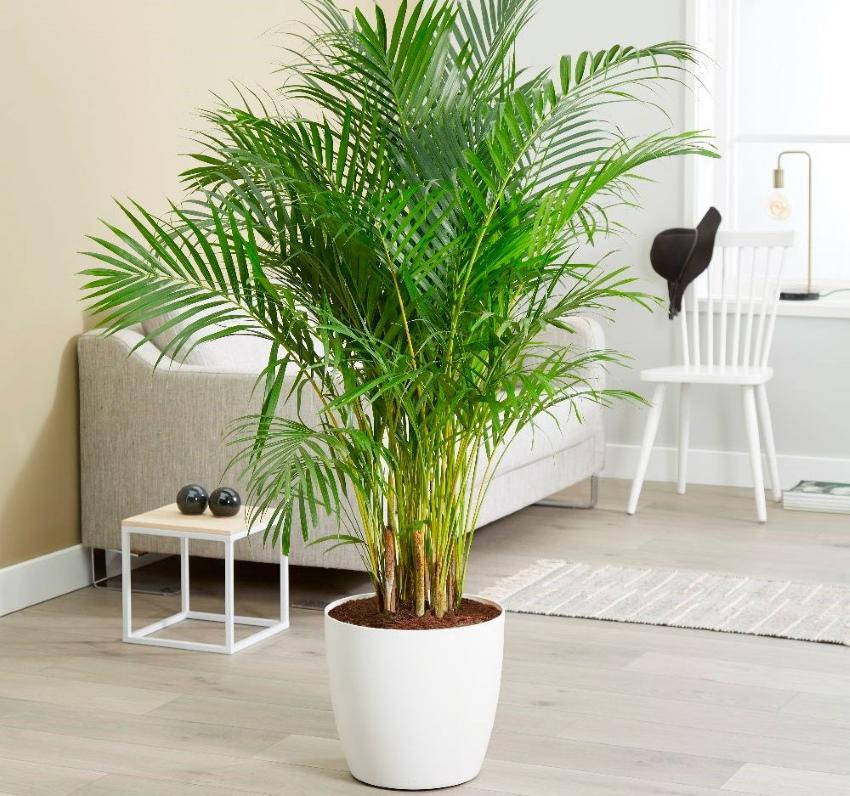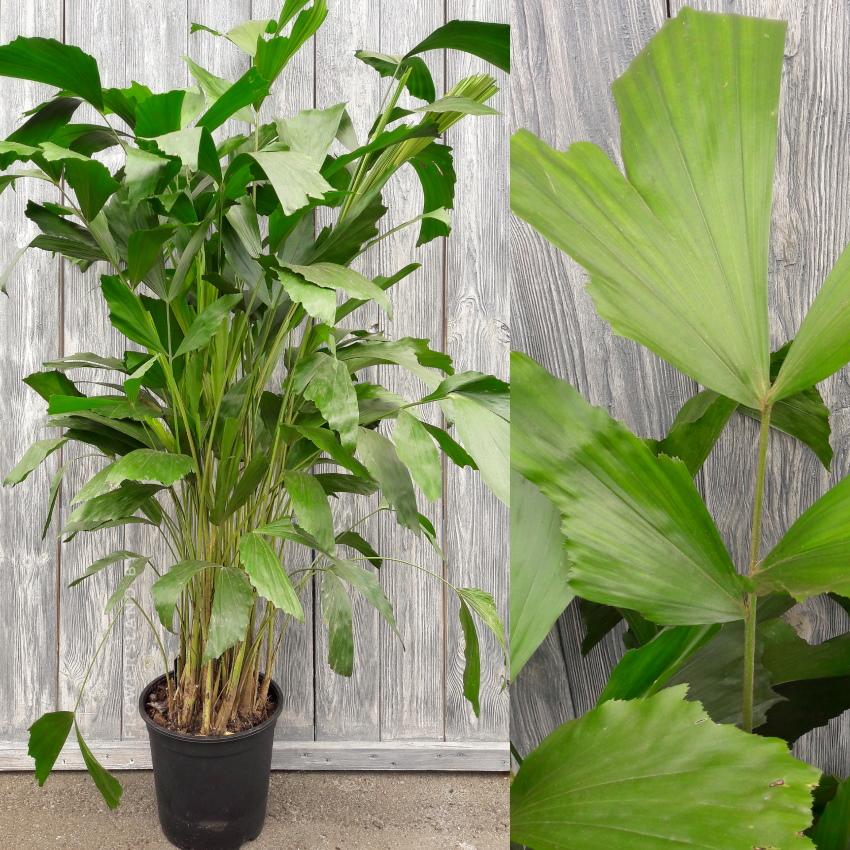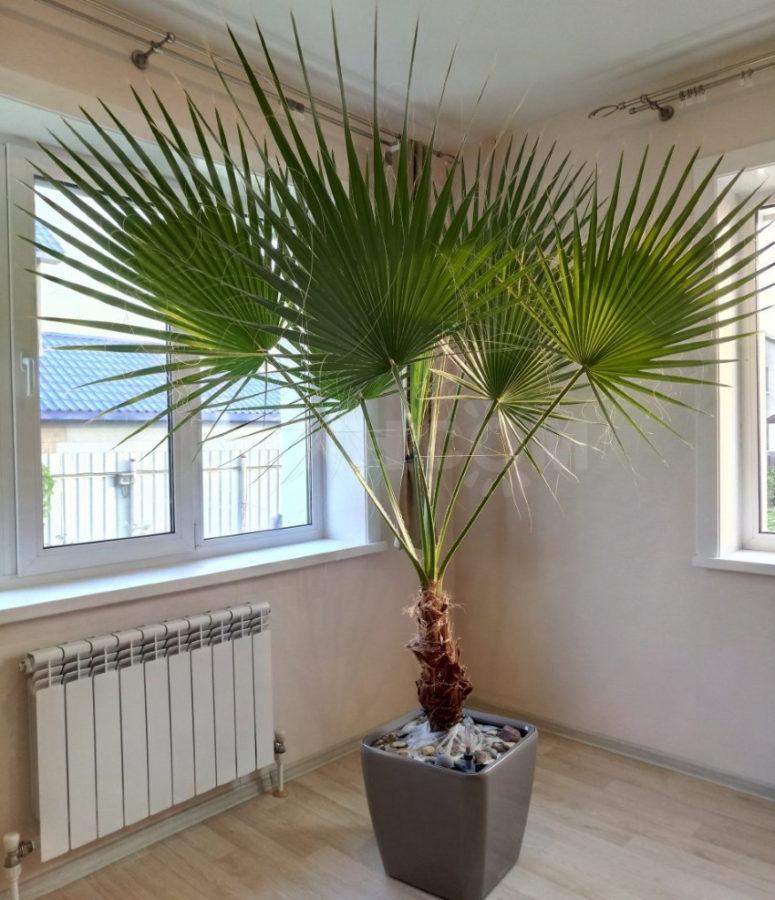Home palms - varieties, photos and names of ornamental plants
 Even if you have a small house, be sure to find a place for at least one beautiful palm tree. And our small catalog will help you choose a plant for you, where you can find domestic palms, varieties, photos and names. This is one of the most spectacular crops out there, and even one flower will transform your room into a real jungle. Originally from the tropics, palms feel good in indoor conditions and do not need special care. Moreover, they tolerate partial shade well, so a tub with a flower can be placed even in the back of the room. Most species grow tall, but there are also quite compact palms.
Even if you have a small house, be sure to find a place for at least one beautiful palm tree. And our small catalog will help you choose a plant for you, where you can find domestic palms, varieties, photos and names. This is one of the most spectacular crops out there, and even one flower will transform your room into a real jungle. Originally from the tropics, palms feel good in indoor conditions and do not need special care. Moreover, they tolerate partial shade well, so a tub with a flower can be placed even in the back of the room. Most species grow tall, but there are also quite compact palms.
Domestic palms - varieties, photos and names
Palms differ not only in their height, but also in the structure of the plant, and the shape of the leaves themselves. They are:
- fan-shaped;
- feathery;
- sago.
The popular caryote palm or fishtail is worth mentioning separately. Its leaf plates are also pinnate, but twice, while the lobes are not narrow, but wide. They are cut into wide, asymmetrical wedges with a truncated top and do look like fish tails.
Fan palms
The leaves of such plants are deeply dissected into many thin segments. They radiate from the center in rays, while remaining one whole. Most species have a stem, and the leaves are attached to it on long petioles. But there are also bushy palms without a trunk.
Palm trees grow from fan varieties at home:
- Washingtonia. The leaves are attached to the top of the trunk on long petioles covered with small thorns. In a tub it grows up to 4 m in height.

- Liviston. At home, it grows up to 2 m in height and hardly forms a trunk. Its short resemblance consists of dried remains of petioles. The leaves are separated only to the middle of the plate.

- Rapis. Thin stems form a lush bush with many leaves at the top. They are divided into narrow segments almost to the end of the plate.

Cirrus palms
A feature of these species are narrow long leaves. They are located on both sides of the midvein, turning into a long petiole.
Of the feathery species, they are most often grown:
- Hoveu... With age, forms one trunk, from the top of which long petioles diverge. The height of a house palm does not exceed 3 m.

- Hamedorey. In a tub it grows up to 1.5 m, has one or many thin, but strong, stems. Long arcuate feathery leaf plates are attached to them.

Feather palms include date and coconut palms.
Sago palms
 A characteristic feature of such plants is the presence of a very thick trunk, covered with the remains of dead leaves. The leaves themselves are like a fern, feathery in shape, growing in rows from the top of the trunk. There are so many of them that the plant looks more like a bush than a tree. In this case, the length of the plate can be up to 1 m.
A characteristic feature of such plants is the presence of a very thick trunk, covered with the remains of dead leaves. The leaves themselves are like a fern, feathery in shape, growing in rows from the top of the trunk. There are so many of them that the plant looks more like a bush than a tree. In this case, the length of the plate can be up to 1 m.
At home, most often different types of such a sago palm are grown as cycas or a cycad.